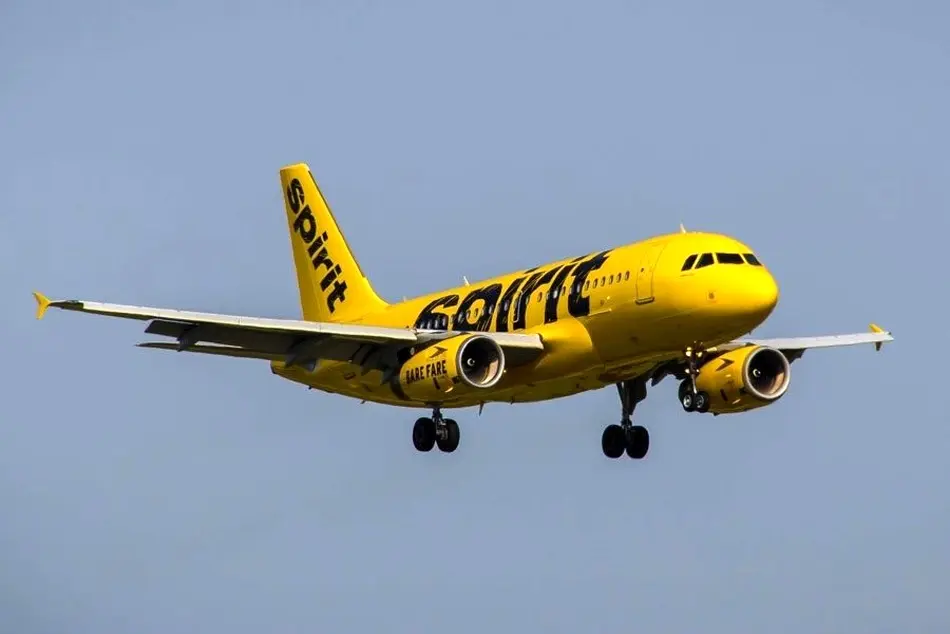Frontier Airlines Prepared To Move Quickly In Spirit Offer
Reiterating interest in a combination with Spirit Airlines, Frontier Airlines says it is prepared to “move quickly” to make the deal happen.

Reiterating interest in a combination with Spirit Airlines, Frontier Airlines says it is prepared to “move quickly” to make the deal happen.
Spirit rebuffed Frontier’s latest overtures in late January, describing the proffered terms as “both inadequate and unactionable.” Frontier maintains that its proposal would offer more value than Spirit’s standalone restructuring plan can achieve on its own. The offer on the table remains the same, Frontier says.
“As a combined airline, we would be positioned to provide more options and deeper savings,” Frontier CEO Barry Biffle said on a Feb. 7 earnings call. “We stand ready to engage with Spirit regarding our proposal and note their disclosure yesterday to extend the tender deadline for their equity rights offering by a week. We obviously know Spirit very well and are prepared to move quickly to engage to make this compelling opportunity happen.”
Spirit, which intends to exit its streamlined chapter 11 process in the first quarter (Q1) of 2025, declined comment. Its equity rights offering seeks to raise $350 million, the deadline for which has now been extended twice—most recently from Feb. 13 to Feb. 20. The airline filed for bankruptcy protection in November 2024.
Meanwhile, Frontier is working through its own plan for transformation, reporting encouraging results from adjustments to network, loyalty and merchandising, as it seeks to improve both profitability and customer experience. Building on recent moves in the premium space, the carrier is preparing to launch a previously announced two-by-two first-class seating product in late 2025, following introduction of a European-style business class that achieved over 70% sold load factors in the fourth quarter (Q4). The carrier is also working to unlock value from its loyalty program. Since announcing free checked bags for card-holding loyalty members in August, co-brand card acquisitions jumped 35% year-over-year, while spend per cardholder increased 11% in Q4.
The lucrative revenue stream is one in which Frontier sees room for growth.
“Today, our co-brand revenue per passenger is under $3 compared to over $30 at legacy and other low-cost carriers,” noted Chief Commercial Officer Bobby Schroeter. “Even capturing a fraction of the legacy and low-cost-carrier levels represents a meaningful and achievable growth opportunity over the next few years.”
Network changes are also giving the carrier confidence in its future, as it pursues a target of double-digit adjusted pre-tax margins by the summer. Over the past year, the carrier has ramped its levels of out-and-back flying, pivoted from capacity-saturated markets, and managed day-of-week capacity deployment to better match demand patterns. Those moves are not only helping improve margin performance but have “created a resilient network that enables speedy operational recovery from irregular operations,” Frontier president Jimmy Dempsey said. “The setup of a more disciplined industry capacity deployment this year provides a positive backdrop for unit revenue improvements that meet our targets.”
New bases launched in March, April and May are starting to mature, the carrier noted. The airline opened its 13th crew base in San Juan, Puerto Rico, over the summer and expects to advance to more bases over the next two to three years, as it takes delivery of more Airbus aircraft. “I’m not going to pre-announce where they are,” said Dempsey, noting that Frontier may “seed” some bases going into 2026 and 2027.
The carrier ended 2024 with 159 aircraft in its fleet, inclusive of six Airbus A321neo deliveries during Q4, all financed with sale-leaseback transactions. It plans to take delivery of four A321neos in Q1, another four in the second quarter and two in the third quarter, while Q4 deliveries are expected to comprise eight A320neos and three A321neos—aircraft which also have committed sale-leaseback financing. Executives reiterated intent to moderate growth until capacity and demand come into balance, and the business returns to double-digit margins.
“That’s going to mean that we continue to focus on peak periods ... but most importantly, peak days of the week,” Biffle said. “We’re going to fly on the days and periods people want to go, and we’re not going to chase utilization.”
In Q4, Frontier achieved record total operating revenue of $1 billion, up 12% year-over-year on 2% lower capacity. The airline reported a net income of $54 million for the quarter, versus its year-ago quarterly net loss of $37 million. The carrier’s quarterly pre-tax margin was 5.1%. Full year operating revenue climbed to $3.8 billion, up 5% year-over-year, and its 2024 net income reached $85 million, compared to a net loss of $11 million in 2023. Frontier posted a 2.3% pre-tax margin for full year 2024. Looking ahead, Frontier expects its adjusted diluted earnings per share to range between breakeven to $0.07 for Q1 2025, and at least $1.00 for the full year, as revenue and network initiatives gain momentum.
“Our revenue trends are really performing well, on the heels of what we’ve done in the network,” Biffle said. “There’s still a lot in the tank, if you will, just from the network initiatives—and we’re really just getting started on the ‘New Frontier.’”




I can understand why they stop the flights to port au prince which is located in the western side of Haiti with the gang violence.But I don’t understand why Spirit airline stop flying to Cap haitien which is located in the northern part of Haiti.It’s peaceful no shooting no gang violence.I hope they start flying back soon.